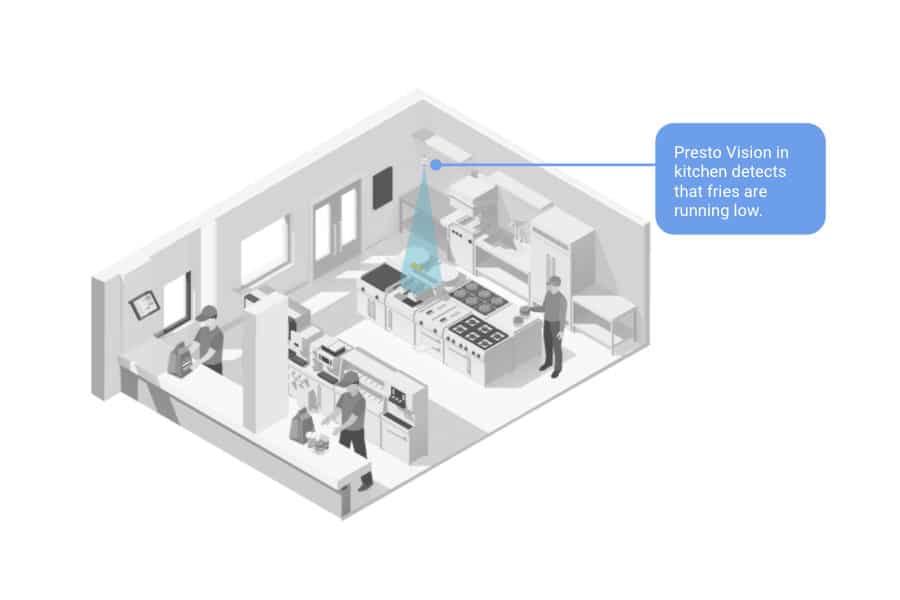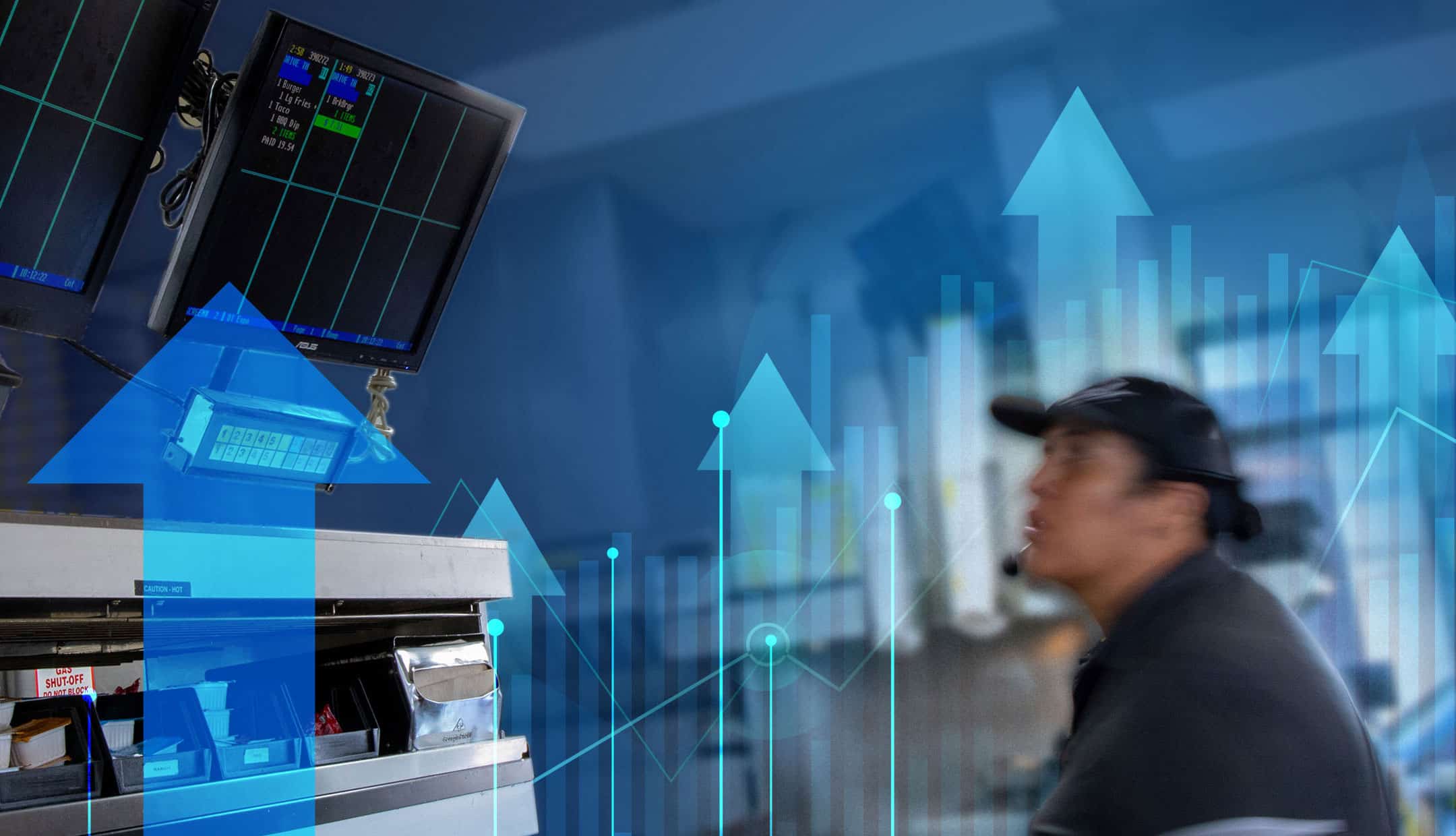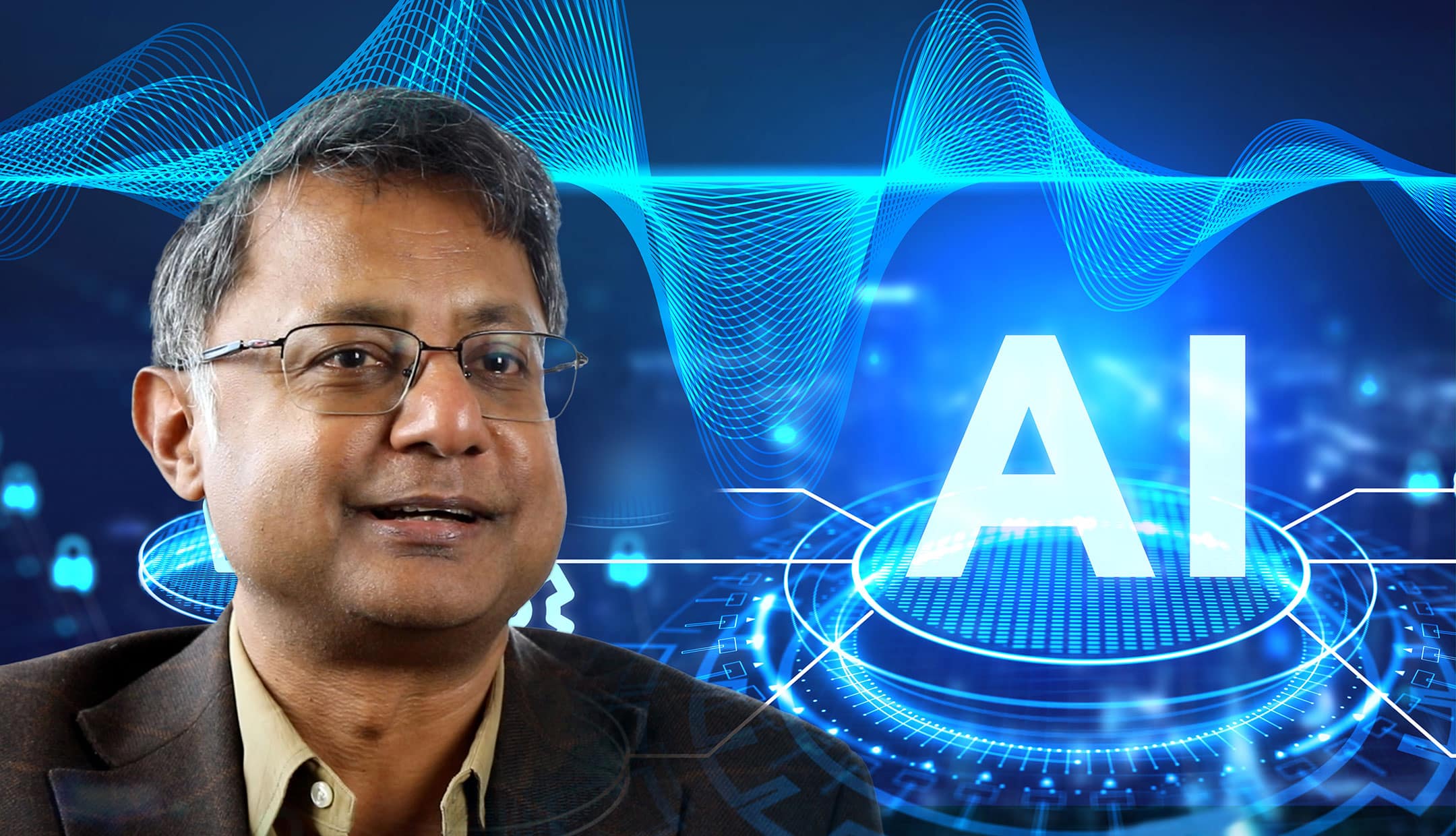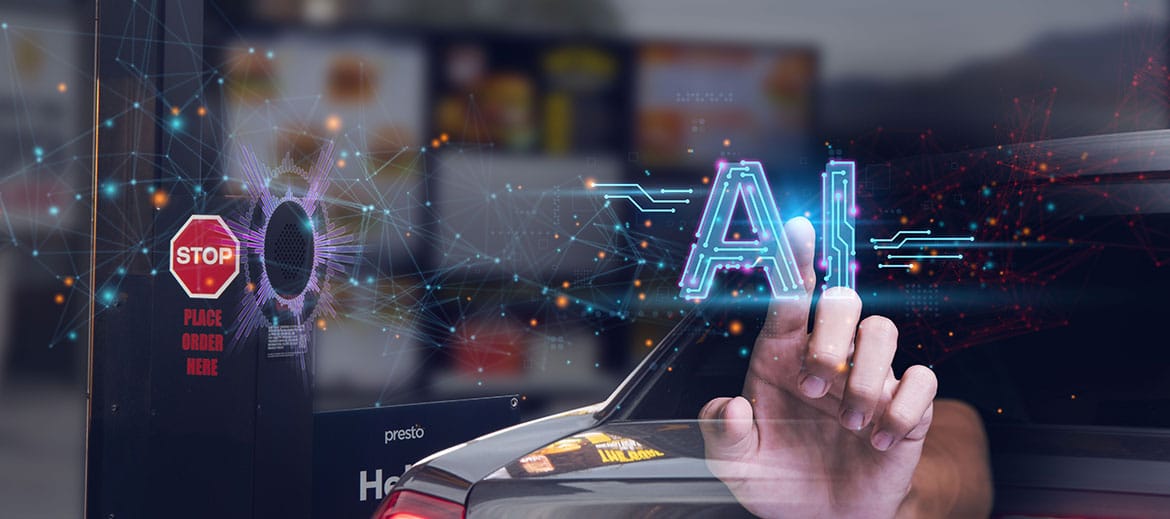As the restaurant industry comes out of the pandemic, it’s still seeing high levels of stability. Check sizes are increasing while guest counts have not fully recovered. Employment levels are still 12% below pre-pandemic levels.
Volatility makes it more difficult to plan ahead. It gets harder to optimize staffing and inventory. This isn’t just bad for margins. It can increase wait times and lead to a poor guest experience.
For these reasons, demand forecasting is especially important for restaurant chains. Each location will see different sales trends. But to show true resilience, restaurants need more. Real-time demand forecasting enables drive-thru operators to solve bottlenecks before they impact guest experience and sales.
How does real-time demand forecasting work?
A computer vision system can automate the entire process. It consists of a few cameras that are tied to a proprietary AI system. The cameras gather information in the drive-thru or kitchen. This can include things like line length, inventory levels, and weather. The AI system then immediately processes the data into actionable insights for managers.
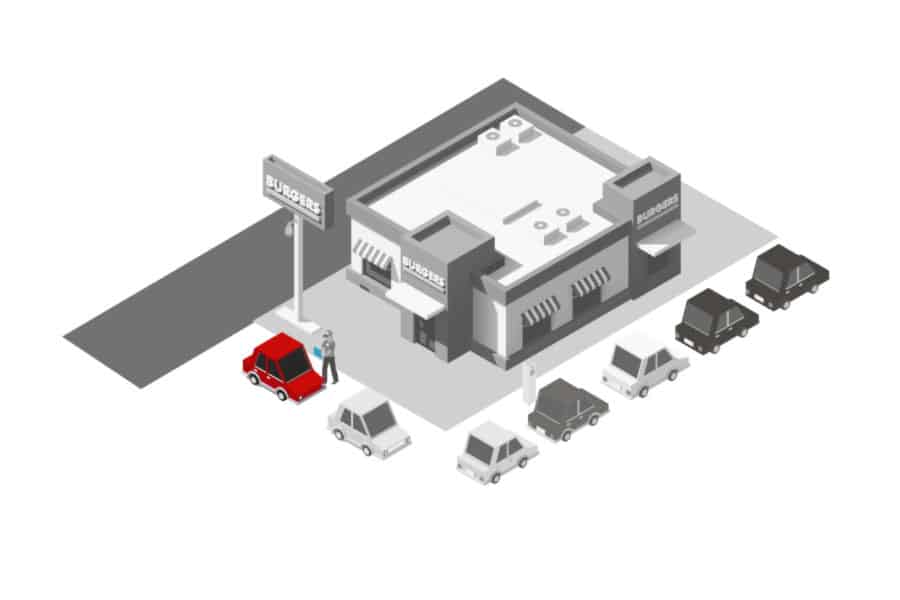
Optimize staff scheduling to speed up lines.
With the staff shortage and growing labor costs, restaurant operators need to make the most of their existing teams. Computer vision in the drive-thru can alert managers about long wait times and line lengths. This allows them to deploy staff with line-busting tablets before guests get too fed up with waiting.
For extra lean teams: the computer vision system can also surface information to digital menu boards and voice ordering technologies, enabling them to promote items with short preparation times.
Improve inventory management.
Are guests growing frustrated with unavailable items or long order preparation items? Deploy Presto Vision in both the drive-thru and kitchen to forecast demand and ensure adequate inventory.
The system first uses guest traffic data from the drive-thru to predict demand for certain menu items. It then monitors inventory levels in the kitchen and alerts staff to prepare more food items as needed.
Increase sales and guest satisfaction.
A computer vision system isn’t just helpful for identifying changes in the physical environment. The AI can monitor sales trends to augment your sales with smarter upsells. If trained properly, it could even analyze social media trends, news, and event calendars. Digital menu boards can then immediately replace poorly performing promotions with trending items.
Achieve smarter, leaner operations with tech.
With real-time demand forecasting, drive-thrus can constantly optimize performance for a variety of factors. It sounds revolutionary, but the technology for it is already deployed in large quick-service restaurant chains. Presto Vision offers smart drive-thru analytics that are useful and actionable. Calculate your savings with Presto Vision by answering five simple questions.
About Presto
Presto overlays next-gen digital solutions onto the physical world. Our enterprise-grade touch, vision, and voice technologies help hospitality businesses thrive while delighting guests. With over 100 million guests using Presto each month and 300,000 systems shipped, we are one of the largest technology providers in the industry.
Founded at M.I.T. in 2008, Presto is headquartered in Silicon Valley, Calif. with customers including top 20 hospitality chains such as Applebee’s, Aramark, Chili’s Grill & Bar, Denny’s, and Outback Steakhouse.
